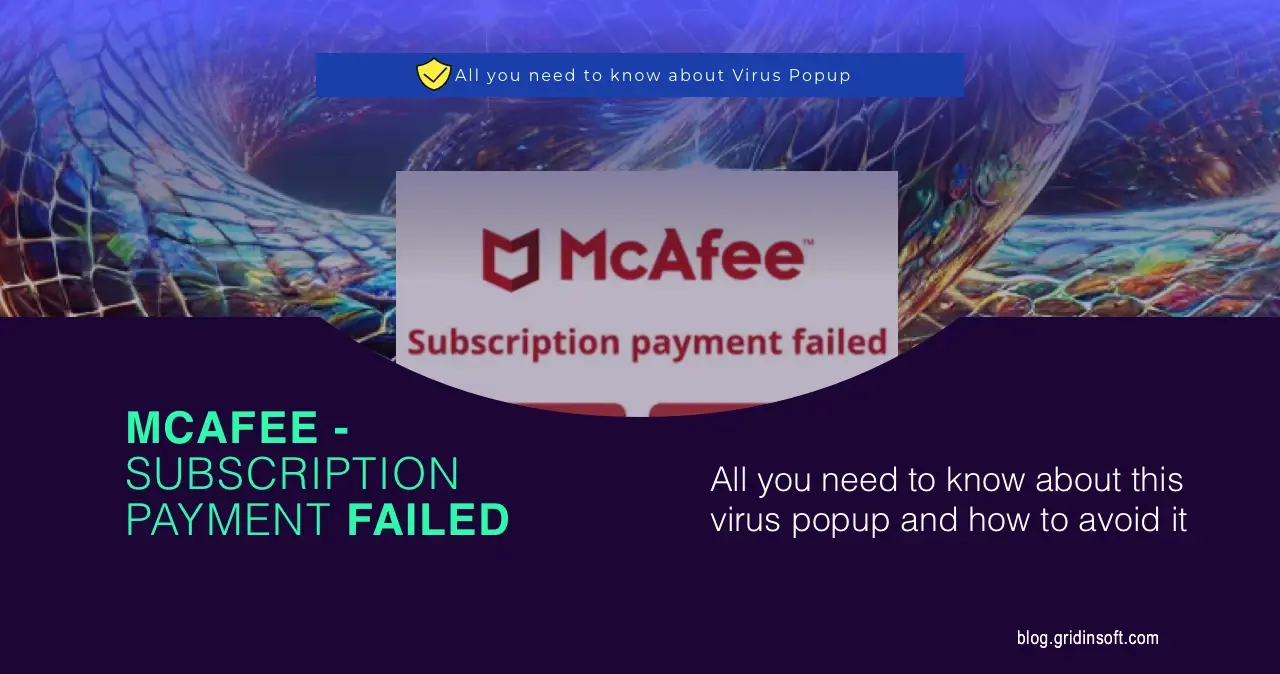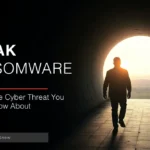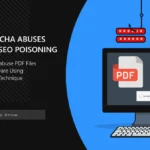“McAfee Subscription Payment Failed” popup is a scam that often appears on questionable sites. Its purpose may vary depending on the greed level of the initiators, but in most cases it tries to trick the visitor into installing questionable programs or spending excessive amounts of money. In this post I shed light on this scheme and also provide tips on how to avoid it.
McAfee Subscription Payment Failed Scam Overview
The McAfee Subscription Payment Failed scam is a deceptive scheme that falsely claims a user’s antivirus subscription has expired and that payment for renewal has been declined. This scam is entirely unaffiliated with McAfee, despite using its branding to appear legitimate. Crooks are just using the name of a famous brand for malicious purposes, and not for the first time.
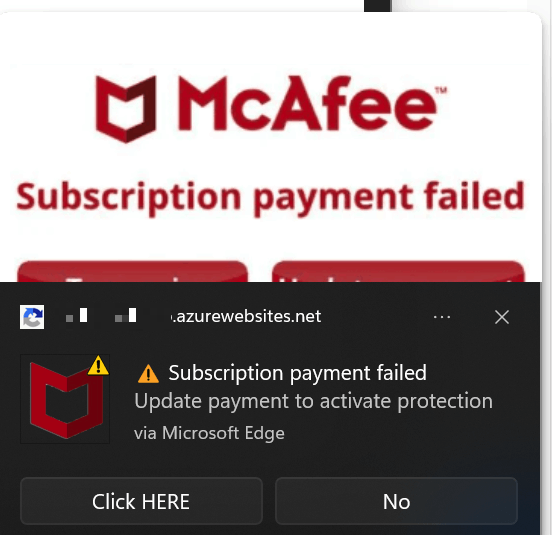
Victims typically encounter this fraud while browsing untrustworthy websites, where they are presented with alarming pop-ups or messages urging them to update their payment details. The goal can be two-fold, to either exploit McAfee’s affiliate program for illicit commissions or lead users to malicious sites designed to steal sensitive financial information. In some cases, users may even be tricked into downloading harmful software disguised as antivirus protection.
How Does It Work?
The ways to get to the site can be different, both intentional and not. The latter option implies that the user gets to the site accidentally, most often it is a click on advertising links in search results. Another option involves visiting dubious sites, such as torrents and sites with pirated content. Such sites usually live by displaying ads that promote suspicious things.
When a user visits a website hosting this scam, they are shown a fake notification claiming their McAfee subscription has expired. It also states that automatic renewal was unsuccessful due to a declined payment card. The page then prompts users to click an “Update payment details” button to restore their protection.
It is worth mentioning here that the further structure of the fraud differs depending on the specific target of the fraudsters. The most innocuous scenario eventually leads to a legitimate McAfee site, while a more dangerous one may lead to a malware download. The first one meaning, the scam redirected users to McAfee’s official payment page, abusing its affiliate system to generate commissions for the fraudsters.
However, there is no guarantee this will always be the case. More dangerous variations of the McAfee Subscription Payment Failed scam have less well-intentioned goals. The most common among them is tech support fraud. In short, it is a scheme that encourages the user to contact pseudo experts to fix non-existent problems with the system.
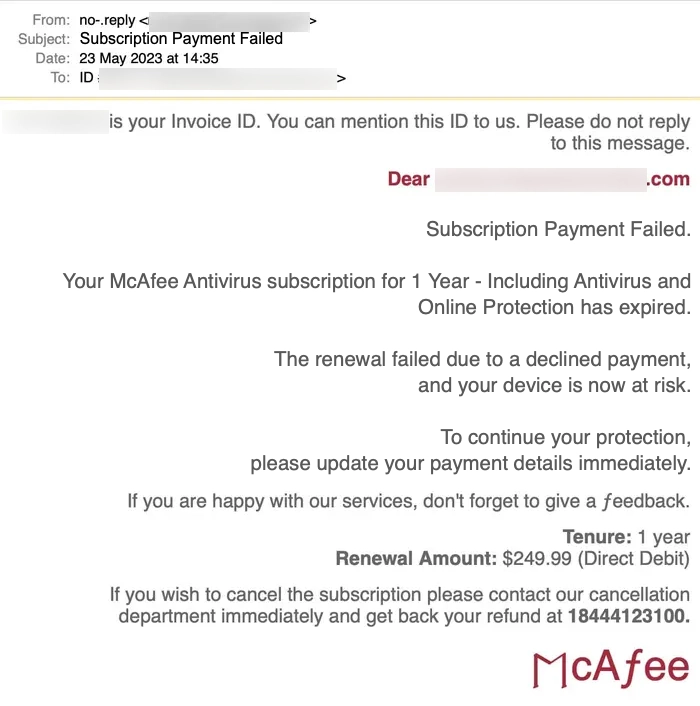
And of course, these fraudulent sites are designed to capture credit or debit card details. The stolen information can then be used for unauthorized transactions, identity theft, or sold on dark web marketplaces. Moreover, users may be redirected to websites hosting malware. These pages may prompt visitors to download fake antivirus software, adware, or browser hijackers. In more severe cases, they may distribute trojans or ransomware, all while masquerading as McAfee security tools.
How To Avoid Scams Online?
My research shows that users typically end up on scam sites like this through various deceptive online practices. Rogue advertising networks and intrusive pop-ups often push these scams. Additionally, mistyped URLs (typosquatting) containing fake warnings or offers can lead unsuspecting users to such fraudulent pages.
To avoid falling victim to scams like this, it is essential to practice cautious browsing habits. Carefully check URLs before clicking, and avoid websites known for hosting questionable content. It’s not common, but it’s not zero chances.
Be wary of aggressive pop-up ads, particularly those making urgent claims about security issues or payment failures. It’s best to use an ad blocker. Always verify license status directly through the official website of the service provider, rather than clicking on links from unsolicited messages.
Users should also disable browser notifications from websites. Scammers frequently use them to push deceptive alerts. Remaining vigilant against suspicious emails is another crucial step in staying safe online. This is especially important for emails that urge immediate action or contain unexpected attachments.
To have reliable and automated protection against any unwanted websites and programs, consider using GridinSoft Anti-Malware. This program has multi-directional protection that can stop both present and potential threats, thanks to its advanced detection system and network security engine. Click the banner below to get yourself a proper cybersecurity shield.

